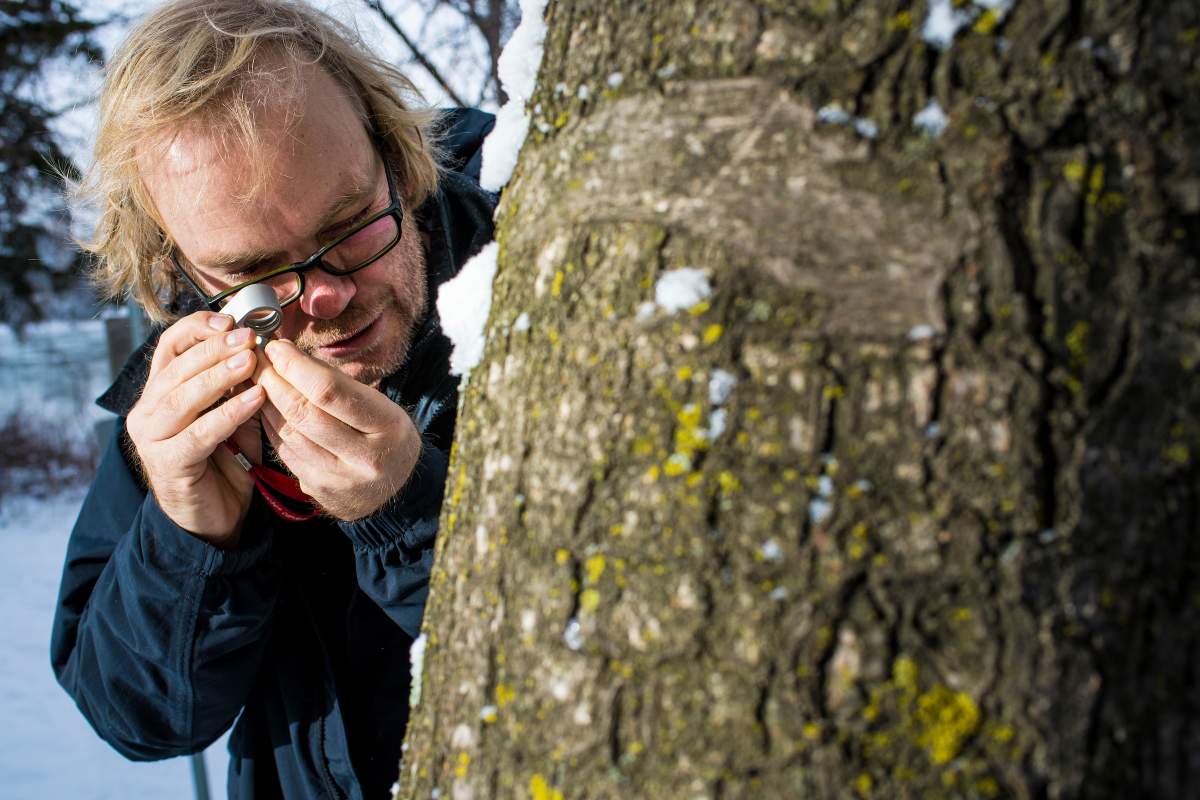
Toby Spribille, in the Department of Biological Sciences, examines lichen growing on a tree. New findings by UAlberta scientists show that individual lichens can have up to three fungi. Photo credit: John Ulan
Individual lichens may contain up to three different fungi, according to new research from an international team of researchers. This evidence provides new insight into another recent discovery that showed lichen are made up of more than a single fungus and alga, overturning the prevailing theory of more than 150 years.
The new study was a collaboration between the University of Alberta and Uppsala University in Sweden, and led by Veera Tuovinen, a postdoctoral fellow under the supervision of Toby Spribille, assistant professor in UAlberta's Department of Biological Sciences.
A classic example of symbiosis, lichens have long been known to be the result of a mutually beneficial relationship between fungi and algae. "With the microscopy, we could visualize the mosaic of different organisms within the lichen," said Tuovinen, who completed her PhD at Uppsala University. "We're realizing that interactions are much more complex than previously thought."
The research team used advanced DNA sequencing to examine the genomes of the wolf lichen, a brilliant chartreuse-yellow lichen that grows on trees across western Canada, the United States, and Europe. While the species is well-studied, the researchers found that, almost regardless of where they were sampled, the wolf lichens contained not one or two fungi, but three.
"Our findings from two years ago challenged the long-held view that lichens were made up of a single fungus and alga," explained Spribille. "This new research complicates the nature of these relationships even further. For one thing, it means that no two lichens necessarily have the same medley of partners."
"What this means in concrete terms to the overall symbiosis is the big question," added Hanna Johannesson, associate professor at Uppsala University and joint supervisor of the research. "What we are finding now is basically what researchers since the 1800s would have liked to know-who are the core players, what function do they perform, all the cards on the table."
With the roster of players present in wolf lichens becoming clear, Johannesson and Spribille want to figure out how each member benefits in the give-and-take world of symbiosis. The scientists are particularly interested in the ability of fungi and algae to construct architectural structures from microscopic building blocks.
"The fungi and algae that make lichens are doing very interesting things in a confined space," says Spribille. "Knowing that there might not be any one way to pigeonhole the relationship is very helpful moving forward."
The research was conducted with collaborators from Uppsala University and the Swedish University of Agricultural Sciences, as well as Indiana University in the United States. The paper, "Two basidiomycete fungi in the cortex of wolf lichens," was published in Current Biology (doi: 10.1016/j.cub.2018.12.022).